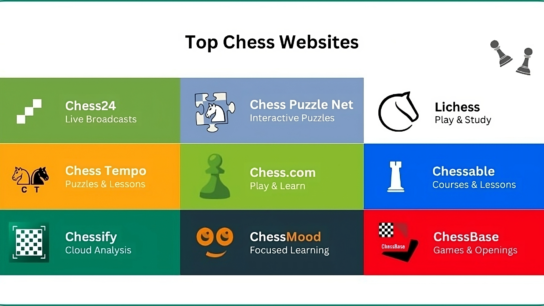Basics of Chess for Beginners
Chess, a game of strategy and intellect, has captivated minds for centuries. If you’re new to the world of chess, understanding its basics is the first step towards an enriching journey of learning and enjoyment.
1. Chessboard and Setup:
A standard chessboard consists of 64 squares, arranged in an 8×8 grid. Each player starts with 16 pieces: one king, one queen, two rooks, two knights, two bishops, and eight pawns. Place the pieces on the board with the back row containing the rooks in the corners, followed by knights, bishops, the queen, and finally, the king. Pawns occupy the second row.
2. Objective:
The goal in chess is to checkmate your opponent’s king. This occurs when the king is under direct attack with no legal moves to escape the threat. While checkmating the opponent is the primary objective, the game can also end in a draw or stalemate under certain conditions.
3. Movement of Pieces:
King: Moves one square in any direction.
Queen: Moves horizontally, vertically, or diagonally across the board.
Rook: Moves horizontally or vertically.
Bishop: Moves diagonally.
Knight: Moves in an L-shaped pattern – two squares in one direction and one square perpendicular.
Pawn: Moves forward but captures diagonally. Pawns have a unique two-square initial move and the option to promote to any other piece upon reaching the eighth rank.
4. Special Moves:
Castling: Involves moving the king two squares towards a rook, and the rook moves to the square the king crossed.
En passant: A pawn capturing move when an opponent’s pawn moves two squares forward from its starting position, passing an adjacent pawn.
5. Notation:
Chess notation is a system to record moves. Each square is identified by a combination of a letter (a-h) and a number (1-8). Moves are recorded with the piece abbreviation and the destination square (e.g., Nf3 for a knight moving to f3).
Mastering these basics sets the foundation for a deeper understanding of chess. As a beginner, focus on honing your skills in piece movement, learning strategic principles, and practicing regularly. The beauty of chess lies in its complexity, offering endless opportunities for growth and enjoyment as you navigate the intricacies of the game.
- Teenager Defeats Magnus Carlsen in 3 Chess Games!
- Navigating the Chessboard: Top 10 Chess Websites for Enthusiasts
- Lightning Strikes: The Top 10 Fastest Checkmates
- Mastering the Game: 7 Fundamental Rules to Play Chess Like a Pro
- Understanding Elo Points in Chess: A Guide to Improvement





